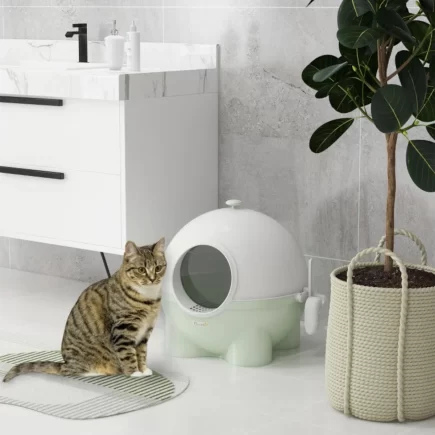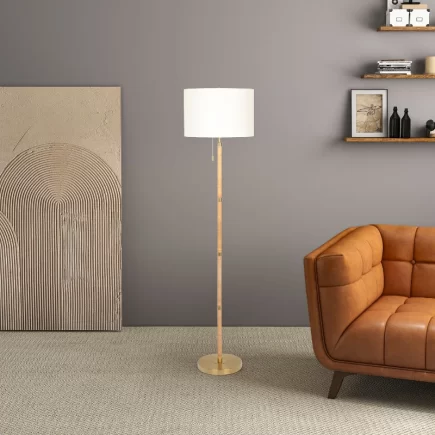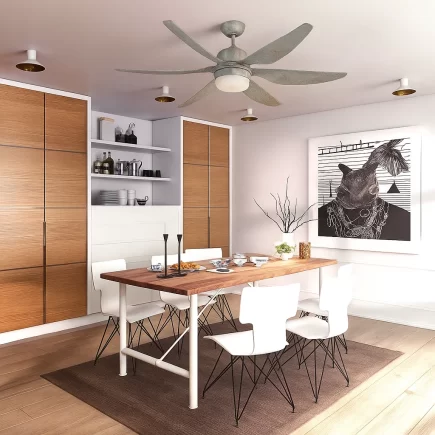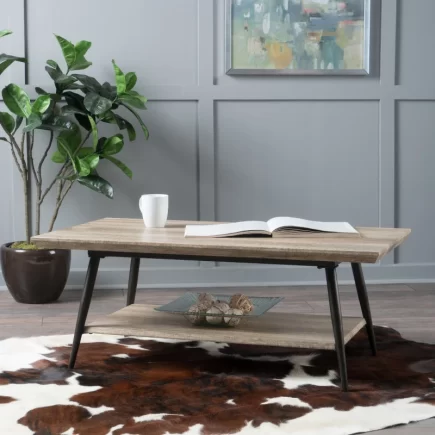An accent chair can be the finishing touch that elevates a room from basic to beautiful. Whether you’re outfitting a cozy corner or adding a statement piece to your living room, the right accent chair offers both style and function. It’s not just about aesthetics; it’s about finding a chair that complements your space, enhances your comfort, and reflects your unique taste.

In this article, we’ll explore all the key aspects to consider when choosing the perfect accent chair for your home.
Understanding Your Space
Evaluate Room Size and Layout
Before you even start looking at chairs, you need to assess the room you plan to place it in. The size and layout of the room should play a critical role in choosing the right accent chair.
- Small Rooms: In smaller rooms, an oversized chair can feel cramped and overwhelming. Opt for a sleek, compact design that doesn’t dominate the space.
- Large Rooms: In larger spaces, feel free to go for a more substantial chair. The chair should fit comfortably within the layout without making the room feel unbalanced.
Think about where the chair will be placed, whether it’s by a window, next to a bookshelf, or beside a coffee table. The layout will determine not only the chair’s scale but also its function.
Consider the Function of the Space
Is your accent chair meant to serve a specific function, like extra seating for guests, or will it be more decorative? Understanding the purpose of the chair will guide your decision-making process.
- Decorative Chairs: If the chair is mainly a design element, go for one that stands out and adds flair to the room. Focus on style and color to make sure it complements your existing décor.
- Seating Chairs: If the chair is meant to provide extra seating, prioritize comfort and ergonomics.

Style Selection
Choose Based on Room Theme
The style of the accent chair should match or complement the theme of the room. Whether you’re aiming for a traditional, modern, or eclectic look, the chair can either blend in seamlessly or serve as a bold contrast.
- Modern: Opt for clean lines, minimalistic designs, and neutral colors.
- Traditional: Look for chairs with ornate detailing, classic fabrics like leather, or rich woods.
- Eclectic: If your style is more eclectic, don’t be afraid to mix patterns, textures, and colors that stand out.
Define Your Color Palette
When choosing an accent chair, consider how its color will fit into your room’s existing color scheme. You can either match or contrast the chair’s color with other furniture and wall colors.
- Matching: If you want the chair to blend in, choose a color that complements your room’s palette. Neutral tones or muted shades can work well.
- Contrasting: For a pop of color, go for an accent chair in a bold, contrasting color that stands out against the room’s backdrop.

Comfort Over Aesthetics
Comfort should always be prioritized when choosing an accent chair. While style is essential, a chair must be ergonomically designed to offer support and comfort for sitting.
Test Seat Cushion and Back Support
While an accent chair is often chosen for its looks, comfort should never be sacrificed. A comfortable seat is just as important as a stylish one, especially if you plan on sitting in the chair regularly.
- Seat Cushion: Make sure the cushion provides good support without being too soft or too firm. Look for high-density foam or memory foam for long-lasting comfort.
- Back Support: Check the backrest for proper lumbar support. A chair that offers good support will prevent discomfort during prolonged sitting.

Evaluate Chair Height and Armrest Position
The height of the chair and the position of the armrests should fit your body and the overall room dynamics.
- Seat Height: Ensure the seat height is comfortable for sitting and standing. Standard seat heights range from 17-19 inches, but make sure to test it for your height and comfort.
- Armrests: Armrests should be at a height that supports your arms comfortably without being too high or low.
Materials and Durability
The durability of your accent chair is influenced by the materials it is made from. Choosing the right fabric and frame will ensure that the chair stands the test of time.
Choose Durable Upholstery Fabrics
The material you choose for the upholstery can greatly affect the chair’s longevity and maintenance.
- Leather: Durable and easy to clean, but it may require regular conditioning to prevent cracking.
- Velvet: Soft and luxurious, but may require more frequent cleaning.
- Linen: Breathable and natural, but prone to wrinkles and stains.
- Cotton: Versatile and affordable, but it can stain easily and is less durable.
Choose the fabric based on how much traffic the chair will endure and how easy it is to maintain.

Assess Frame Quality and Stability
The chair’s frame is just as important as its upholstery. The frame should be sturdy enough to last for years. Common materials include:
- Wood: Offers a traditional, classic feel but can be heavy.
- Metal: Lightweight and modern, but may not have the same aesthetic appeal as wood.
- Plastic: Affordable and versatile, but may not be as durable.
Look for strong joints and a well-built frame that can support regular use.
Functional Considerations
Sometimes, functionality is just as important as the chair’s design. Whether you need extra storage or the ability to move the chair around with ease, these considerations will add practical value to your choice.
Storage or Multipurpose Options
If you’re short on space or looking for extra functionality, consider accent chairs with built-in storage. Some chairs offer hidden compartments under the seat, perfect for stashing extra pillows, blankets, or other items.
Other multipurpose options include foldable chairs that can be easily stored away when not in use.
Consider Chair Mobility
If you like to rearrange your furniture frequently, opt for lightweight, easy-to-move chairs. This can be especially helpful in small or multifunctional spaces where the furniture may need to be shifted often.

Budgeting for an Accent Chair
Set a Reasonable Budget
Accent chairs come in a wide range of prices, so it’s important to set a budget before you start shopping. Keep in mind that higher-quality chairs with durable materials and solid frames may come at a higher price, but they are often worth the investment.
Evaluate Value for Money
When considering the price of a chair, assess its quality, design, and durability. A cheaper chair may seem like a bargain, but it might not last as long or provide the same level of comfort as a more expensive one.

Personalization and Customization
One of the best parts about accent chairs is that they can be customized to suit your specific taste. Many manufacturers offer a variety of fabrics, colors, and patterns that you can choose from.
Custom Upholstery and Design
If you’re seeking something unique, many retailers offer chairs that can be customized with your preferred fabric, color, and even patterns. This is a great way to add a personal touch to your home’s design.
Ensuring Practicality for Your Lifestyle
Choose Pet and Kid-Friendly Fabrics
If you have children or pets, durability becomes even more important. Look for fabrics that are resistant to stains, fading, and wear. Fabrics like microfiber and certain synthetics are easy to clean and maintain, making them great options for homes with kids and pets.
Consider the Chair’s Ease of Maintenance
Consider how much time you’re willing to spend cleaning and maintaining your chair. Opt for materials that are easy to wipe down or that feature removable, washable covers for added convenience.
Placement and Arrangement

Positioning the Chair for Maximum Impact
The placement of the accent chair is crucial to making it a focal point of the room. Consider positioning the chair in a spot that draws attention, such as near a fireplace, window, or as part of a cozy reading nook.
Create Balance with Other Furniture
Balance is key when it comes to arranging your accent chair. Ensure the chair complements the surrounding furniture. Too many large pieces can make the room feel crowded, while too few pieces may make it feel sparse. Aim for a harmonious balance.
Try Before You Buy
Whenever possible, test the chair in-store to get a feel for its comfort and fit. If you’re shopping online, check reviews and return policies to ensure you’re satisfied with your purchase.
Finalizing Your Accent Chair Choice
By following these steps, assessing your space, selecting the right style and material, considering comfort, and setting a budget, you’ll be able to confidently choose the perfect Accent Chair for your home. Take your time, test the options, and remember that an accent chair is not just a piece of furniture; it’s an expression of your style and personality.
FAQs:
1. Can I use an accent chair in a room with already many furniture pieces?
Yes, an accent chair can still work in a crowded room. Opt for a chair that contrasts with the other furniture pieces, offering a new shape, color, or texture to create balance and draw attention without overwhelming the space.
2. Is it worth investing in a custom-made accent chair?
Investing in a custom-made accent chair can be worth it if you have specific style preferences or need a piece that fits perfectly into a particular space. Custom chairs also offer greater personalization in terms of fabric and design.
3. Should I prioritize style or comfort when choosing an accent chair?
While style is important, comfort should be prioritized if you plan to use the chair frequently. Look for a chair that balances both aesthetics and ergonomic support.





























